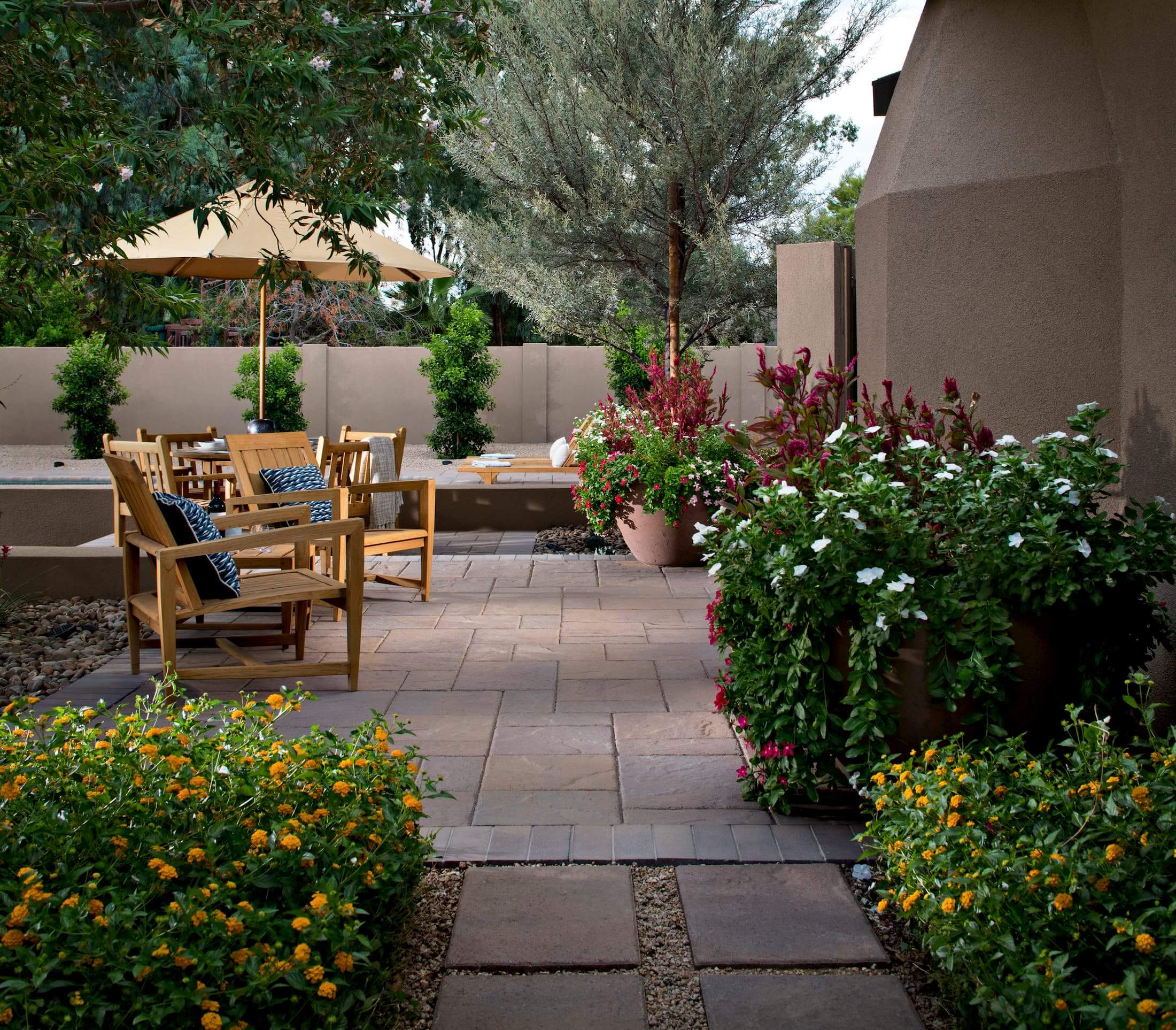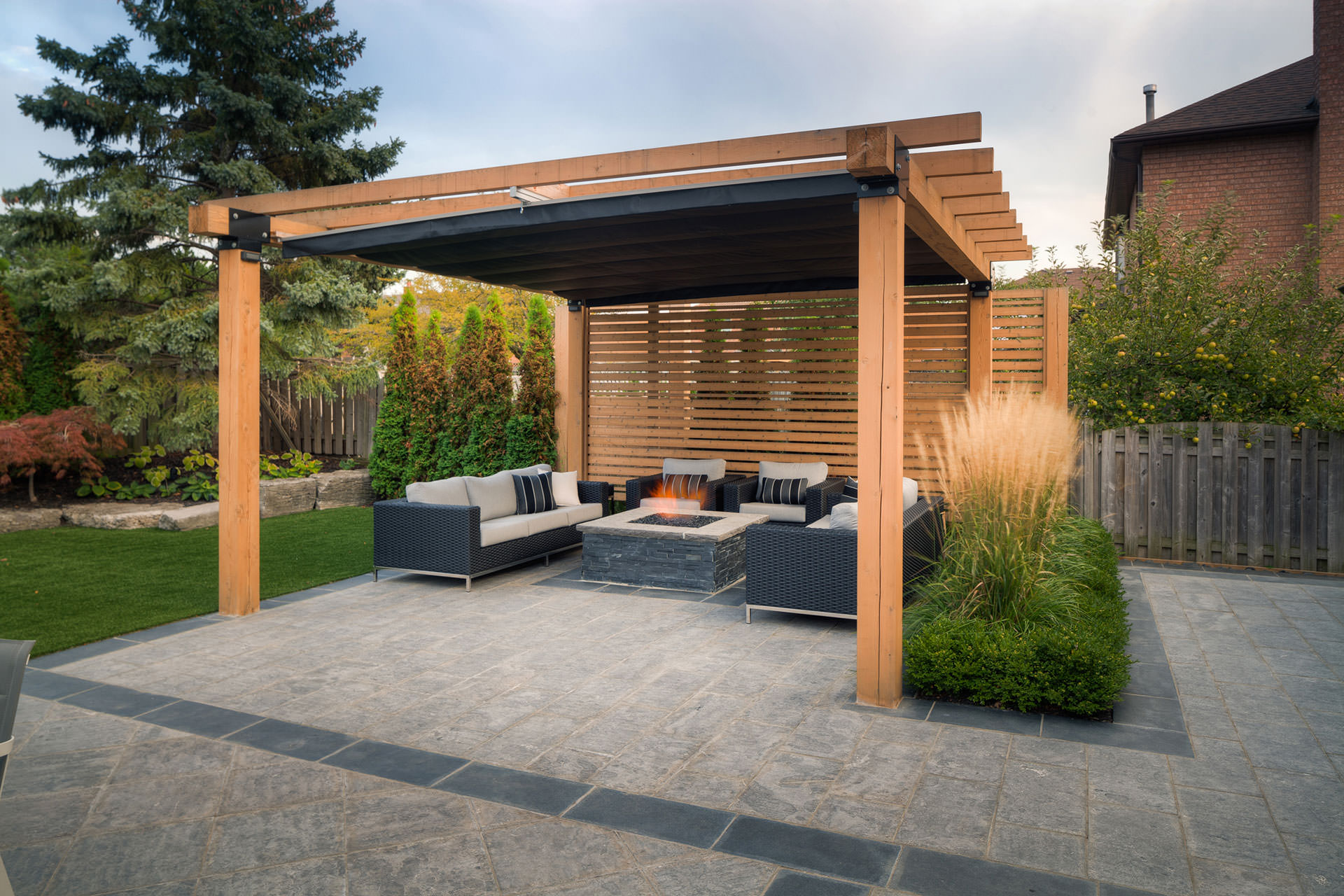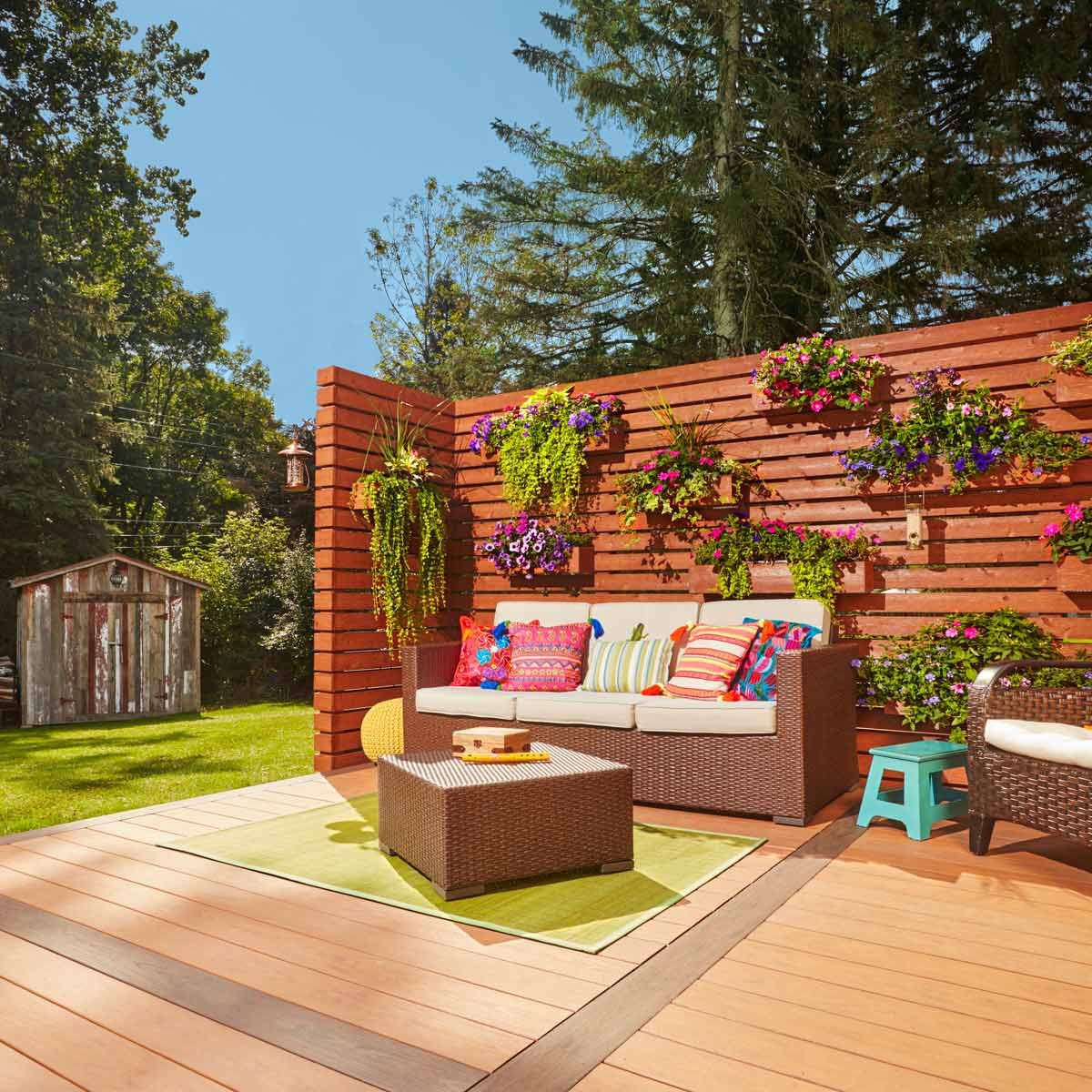Patio design ideas for privacy are essential for creating a relaxing and secluded outdoor space. Whether you live in a bustling city or a quiet suburb, the desire for privacy in your own backyard is universal. A well-designed patio can provide a sanctuary from the outside world, offering a haven for relaxation, entertaining, or simply enjoying the fresh air.
This guide explores various techniques and design elements that can transform your patio into a private oasis. From strategic planting to architectural features, you'll discover a range of options to suit your needs and preferences. We'll delve into the importance of understanding your privacy needs, the benefits of using plants for natural screening, and the impact of lighting and furniture choices on your overall sense of seclusion. By the end, you'll be equipped with the knowledge and inspiration to create a patio that provides the perfect balance of privacy and enjoyment.
Understanding Privacy Needs: Patio Design Ideas For Privacy

Privacy is a crucial aspect of patio design, especially in urban or suburban settings where proximity to neighbors can be a concern. The level of privacy desired significantly influences design choices and can be tailored to individual preferences and circumstances.
Levels of Privacy
Privacy in a patio space can be categorized into different levels, each with unique implications for design.
- Visual Privacy: This refers to shielding the patio from unwanted views from neighbors, passersby, or the street. It focuses on creating a sense of seclusion and visual comfort.
- Sound Privacy: This aims to reduce noise from surrounding areas, creating a more peaceful and relaxing atmosphere. It's particularly important in noisy environments or for those seeking a tranquil retreat.
- Combined Privacy: This encompasses both visual and sound privacy, offering a comprehensive approach to creating a truly private oasis.
Factors Influencing Privacy Needs
Several factors influence the level of privacy desired in a patio space:
- Location: A patio located in a densely populated area or close to a busy street will require higher levels of privacy compared to one situated in a more secluded location.
- Neighbors: The proximity and nature of neighbors can influence privacy needs. If neighbors are close or have a habit of peering into their yards, a higher level of privacy may be desired.
- Personal Preferences: Ultimately, the level of privacy desired is a matter of personal preference. Some individuals thrive in open and communal spaces, while others prefer a more secluded and intimate environment.
Creating a Private Oasis

Transforming your patio into a secluded sanctuary requires careful planning and the right elements. Privacy-enhancing features can create a tranquil escape from the outside world, allowing you to enjoy your outdoor space to the fullest.
Privacy-Enhancing Features
Privacy-enhancing features play a crucial role in creating a secluded patio. These features can effectively block unwanted views and sounds, allowing you to relax and enjoy your outdoor space without feeling exposed.
- Walls: Solid walls, constructed from materials like brick, stone, or concrete, offer the most effective privacy. They create a distinct boundary, blocking both sight and sound.
- Fences: Fences provide a more versatile option for privacy. They can be made from various materials, including wood, metal, or vinyl, and come in different heights and styles to suit your preferences. A solid fence offers excellent privacy, while a lattice fence allows for some light and air circulation.
- Screens: Screens, often made from wood, metal, or bamboo, are a lightweight and visually appealing option for privacy. They can be used to create a partial barrier, blocking some views while still allowing for light and air to pass through.
- Plants: Plants are a natural and beautiful way to enhance privacy. Dense, evergreen shrubs and trees can create a living wall, blocking views and providing sound insulation. Consider planting a variety of plants with different heights and textures to create visual interest and a layered effect.
Materials for Privacy
Choosing the right materials for your privacy features is crucial for creating a cohesive and aesthetically pleasing design. Different materials offer unique advantages and drawbacks in terms of privacy, durability, and maintenance.
- Wood: Wood is a classic and versatile material for privacy features. It offers a natural and warm aesthetic, blending well with most outdoor settings. However, wood requires regular maintenance, such as staining or painting, to prevent rot and decay.
- Metal: Metal is a durable and low-maintenance option for privacy features. It is resistant to weather damage and insects, making it a good choice for areas with harsh climates. However, metal can be prone to rust and may require a protective coating.
- Stone: Stone is a robust and long-lasting material that provides excellent privacy. It is naturally resistant to weathering and requires minimal maintenance. However, stone can be expensive and may require professional installation.
- Greenery: Plants offer a natural and sustainable way to enhance privacy. They require minimal maintenance once established and can create a lush and inviting atmosphere. However, it may take time for plants to grow to a sufficient height to provide effective privacy.
Patio Layout for Privacy
Designing a patio layout that maximizes privacy while maintaining an open and inviting feel is key to creating a successful outdoor space. Consider the following tips:
- Strategic Placement: Place privacy features strategically to block unwanted views from neighboring properties or busy streets. Consider using tall plants or a fence to create a visual barrier around the perimeter of the patio.
- Layered Privacy: Create a sense of layered privacy by combining different privacy features. For example, you could use a fence for the main barrier and then add a screen or tall plants to create additional layers of seclusion.
- Open and Inviting: While privacy is important, it's also essential to maintain an open and inviting feel. Consider using lighter materials, such as lattice or bamboo, for some privacy features to allow light and air to circulate. You can also create a focal point on the patio, such as a fire pit or water feature, to draw attention to the center of the space.
Utilizing Plants for Privacy

Plants offer a natural and aesthetically pleasing way to create privacy on your patio. They provide a living barrier that softens the edges of your space, creating a more intimate and secluded atmosphere. Choosing the right plants for your needs, however, requires considering their growth habits, maintenance requirements, and overall suitability for your climate.
Choosing the Right Plants
The selection of plants for privacy depends on the desired level of privacy, the size of your patio, and your personal preferences. Here's a list of popular plant options for privacy:
- Tall Shrubs: These shrubs offer a dense and quick-growing solution for privacy. Popular choices include:
- Boxwood: Known for its dense foliage and ability to be pruned into various shapes.
- Hydrangea: Offers vibrant blooms and can grow up to 10 feet tall.
- Lilac: Known for its fragrant flowers and ability to reach 15 feet in height.
- Vines: Vines are a versatile option for creating a natural privacy screen. They can be trained to climb trellises, fences, or walls, providing a lush and vertical barrier. Popular choices include:
- Wisteria: Known for its cascading purple blooms and rapid growth rate.
- Clematis: Offers a variety of bloom colors and can climb up to 30 feet.
- Trumpet Vine: Known for its trumpet-shaped orange flowers and ability to grow quickly.
- Trees: Trees provide the most substantial privacy, offering a permanent and tall barrier. Consider:
- Evergreen Trees: Provide year-round privacy, such as:
- Arborvitae: Known for its dense foliage and columnar shape.
- Leyland Cypress: A fast-growing evergreen that can reach heights of 50 feet.
- Deciduous Trees: Offer privacy during the growing season and allow sunlight to reach your patio during the winter. Popular choices include:
- Oak: Known for its majestic presence and strong shade.
- Maple: Offers beautiful fall foliage and can grow to substantial sizes.
- Evergreen Trees: Provide year-round privacy, such as:
Benefits and Drawbacks of Using Plants for Privacy
Using plants for privacy offers numerous benefits, but also comes with some drawbacks:
- Benefits:
- Natural and Aesthetically Pleasing: Plants offer a more natural and visually appealing alternative to fences or walls.
- Sound Absorption: Dense foliage can help reduce noise pollution from neighboring areas.
- Air Purification: Plants naturally filter the air, improving the overall quality of your patio space.
- Increased Property Value: Well-maintained landscaping can increase the value of your home.
- Drawbacks:
- Maintenance: Plants require regular watering, pruning, and fertilization to thrive.
- Growth Rate: Depending on the chosen plant, achieving full privacy may take time as they grow.
- Potential for Pests and Diseases: Plants can be susceptible to pests and diseases, requiring appropriate care and treatment.
Strategic Plant Placement
Strategic plant placement is crucial for creating effective privacy screens. Consider these factors:
- Height and Width: Choose plants that will reach the desired height and width to provide adequate privacy.
- For a patio that is open on all sides, consider planting a ring of tall shrubs or trees around the perimeter.
- For a patio with a single open side, plant a row of tall plants along that side.
- Spacing: Allow sufficient space between plants to encourage proper growth and airflow.
- Sunlight Requirements: Choose plants that thrive in the amount of sunlight your patio receives.
- Growth Habits: Consider the mature size and growth habits of the chosen plants to ensure they will not become too large for your patio.
Architectural Solutions for Privacy

Architectural elements can be used to create a sense of privacy and seclusion on your patio, offering a visual barrier while also adding a touch of elegance and style to your outdoor space. These structures can be designed to complement the existing architecture of your home, blending seamlessly with the surrounding landscape.
Pergolas and Arbors
Pergolas and arbors are popular architectural features that provide both shade and privacy. Pergolas are typically made of wood or metal and feature a series of beams and posts that create a lattice-like structure. Arbors, on the other hand, are more freestanding structures with a curved or arched top.
- Pergolas: They can be used to create a defined space for dining, lounging, or entertaining. By adding climbing plants or vines, you can create a natural wall of greenery that provides privacy while adding a touch of beauty to your patio.
- Arbors: They can be used as a focal point for your patio, providing a shaded entranceway or a place to grow climbing plants. Arbors can be placed at the edge of your patio to create a sense of enclosure, or they can be used to divide the space into different areas.
"A pergola or arbor can be a great way to create a sense of privacy on your patio, especially if you have a small space. By adding climbing plants, you can create a natural wall of greenery that will help to block out unwanted views."
Trellises
Trellises are a versatile architectural element that can be used to create privacy screens, add vertical interest to your patio, or support climbing plants. They are typically made of wood or metal and come in a variety of sizes and styles.
- Privacy Screens: Trellises can be used to create privacy screens along the perimeter of your patio, blocking out views from neighboring properties.
- Vertical Interest: Trellises can add vertical interest to your patio, especially if you have a small space. By placing a trellis behind a seating area, you can create a sense of depth and dimension.
- Support for Climbing Plants: Trellises can be used to support climbing plants, creating a living wall of greenery that provides privacy and adds beauty to your patio.
Example Patio Design with Architectural Features
Imagine a patio with a wooden pergola covered in climbing vines, providing a shaded dining area. The pergola is connected to the house by a walkway lined with tall shrubs and a trellis that supports climbing roses. This design creates a sense of privacy and seclusion, while also adding a touch of elegance and charm to the space. The patio furniture is made of comfortable wicker and features cushions in soft, earthy tones. A small fountain adds a calming element to the space, while the scent of blooming roses fills the air.
Lighting and Privacy

Lighting plays a crucial role in creating a sense of privacy and intimacy on a patio. It can transform the space from a bright and open area to a cozy and secluded retreat. Strategic lighting can help to define boundaries, enhance the ambiance, and create a feeling of security, ultimately enhancing the overall privacy experience.
Lighting Techniques for Privacy, Patio design ideas for privacy
Incorporating lighting to enhance privacy on a patio involves a combination of techniques that aim to create a balanced and inviting atmosphere. This involves strategically placing light sources to illuminate desired areas while minimizing light spill into unwanted areas.
- Ambient Lighting: This provides overall illumination for the patio, creating a soft and welcoming ambiance. Ambient lighting can be achieved using string lights, lanterns, or recessed lighting.
- Accent Lighting: Accent lighting highlights specific features on the patio, such as plants, sculptures, or architectural details. This type of lighting can create visual interest and draw attention to desired areas, while simultaneously minimizing the visibility of unwanted areas.
- Task Lighting: Task lighting provides focused illumination for specific activities, such as reading or dining. This can be achieved using spotlights, pendant lights, or table lamps.
Lighting Plan for Privacy
A well-designed lighting plan complements the privacy features of a patio by creating a layered and inviting atmosphere. The plan should consider the following:
- Light Direction: Direct lighting toward the center of the patio, avoiding direct illumination of surrounding areas.
- Light Color: Warm-toned lighting creates a cozy and inviting atmosphere, while cool-toned lighting can be more functional and less intimate.
- Dimmers: Incorporating dimmers allows for adjustable lighting levels, enabling you to create different moods and levels of privacy.
- Layered Lighting: Combining different types of lighting, such as ambient, accent, and task lighting, creates a dynamic and engaging atmosphere.
Final Wrap-Up

Creating a private patio is a rewarding endeavor that allows you to transform your outdoor space into a sanctuary. By carefully considering your privacy needs, incorporating effective design elements, and embracing the beauty of nature, you can craft a haven that offers both tranquility and style. Remember, a private patio is more than just a place to escape; it's an extension of your home, a space for relaxation, connection, and creating lasting memories.
Q&A
What are some cost-effective ways to create privacy on a patio?
Cost-effective options include using readily available plants like bamboo, fast-growing vines, or even strategically placed trellises with climbing plants. You can also explore budget-friendly fencing materials like wood or metal panels.
How can I incorporate privacy into a small patio?
For small patios, consider vertical elements like tall planters with privacy-focused plants, trellises with climbing vines, or even a small, decorative wall to create a sense of enclosure.
How can I ensure my patio privacy is maintained throughout the year?
Choose plants that offer year-round privacy, like evergreen shrubs or trees. Combine these with deciduous plants that provide privacy during warmer months and allow some sunlight through during winter.
